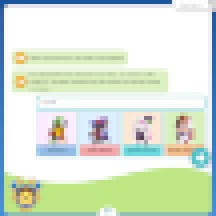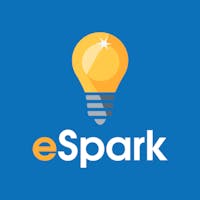In the dynamic landscape of education, truly personalized learning has been nearly impossible to achieve. Classroom teachers, constrained by limited resources and standardized curricula, often struggle to cater to the diverse learning needs of their students. For years, educational technology has promised to fill that gap, but that promise has remained largely unfulfilled. Now, as technology continues to evolve, a new era of personalized learning is dawning, fueled by the power of artificial intelligence. This paradigm shift promises to revolutionize education, making it more engaging, relevant and effective for students.
The Evolution of Personalized Learning
Personalized learning, in its truest sense, necessitates the tailoring of educational experiences to individual students’ needs, strengths and interests. There has been no shortage of programs that enable teachers to personalize the sequence of lessons a given student receives or to assign additional lessons for intervention or enrichment based on their needs. Personalizing the actual content within these lessons, however, has been a different story and for good reason: Curriculum developers simply do not have the bandwidth to create multiple variations of the same lesson hundreds of times over. Of course, content that is built to work for everyone winds up being personalized for no one.
Even within the same classroom, we all appreciate how unique each student can be. Some are sports fanatics, some dream of becoming famous musicians and some love animals more than anything in the world. Many have a new interest or hobby every week. What if teachers had the ability to personalize lessons around the topics students care most about — in the moment? Thanks to the emergence of AI, this is finally possible.
The Power of Choice Texts: A Playful Revolution
The future of personalized learning is exemplified by a new reading tool called Choice Texts, recently released by eSpark, an online math and reading program for students in grades K-5. Choice Texts leverages the power of artificial intelligence to create custom reading passages and comprehension questions for each student based on their own choices and interests. The goal is to create a playfully-personalized, engaging experience for every student, even those who may be reluctant readers. It begs the question: What if students who say they don’t like to read just haven’t found the right thing to read about yet?

Amy Lower, an experienced teacher at Stinson Elementary, Northwest Local Schools, Ohio, enthusiastically shares her experience with this tool, after seeing her fifth grade ELA students become co-creators of their learning experience. Lower explains, “The result is that the students are invested in reading it right from the beginning. This increased engagement is evident when my students reflect on their learning and say they are excited about what they have read. For example, one student asked me, ‘Can I get my journal out and write about this?’ That is what you love to see as a teacher!”
The Impact on Learning Outcomes
When playful personalization is integrated into a classroom, the impact on student learning is far-reaching. Once students who may previously have identified as reluctant readers discover that reading can be a fun, playful experience, their outlook on learning shifts entirely. Ms. Lower states, “Using eSpark has enhanced our reading experience. Our school has a basal reading series, and we also use trade books. So those are not replaced with eSpark, but it supports what we are already doing. eSpark also correlates nicely with NWEA’s MAP Growth [an assessment to help teachers determine instructional strategies]. My students mastered over 960 lessons this year just in ELA, and their progress in reading lessons went up 30 percent from the beginning of the year to the end!”
Personalized learning and student engagement naturally go hand-in-hand: the more personal a lesson is to a student, the more likely they are to stay invested and engaged. Without anything to pique their interest, they are just as likely to tune out of the lesson as they are to absorb it. Educators know that engaged students learn more, as evidenced in this 2017 Gallup Poll. We also know that student choice is one of the strongest motivators we can give them during the school day. Thanks to the potential of generative AI, the dream of a student-centered, choice-driven classroom is more attainable than ever before.
How to Embrace Playful Personalization
Artificial intelligence will play a big role in personalizing classroom instruction, but the technology as we know it today is still relatively new. Activities like eSpark’s Choice Texts offer a safe, secure and accessible way for teachers to introduce some of the benefits into the classroom without the risk.
Ms. Lower shares her experience with adopting new practices: “I think you just have to dive in and do it and not be afraid to change things as you go along. I get my kids involved in this process and ask them for their feedback about using different tools. We have class meetings often, which help me stay engaged with how well the tool is supporting our learning goals.”
As AI continues to evolve, so too will its role in education, and teachers will have to not only stay on top of what’s happening but also equip their students with the knowledge needed to be successful in this rapidly-changing world. “I think we are all a little nervous about AI because we are still learning about it,” Lower states. “If we can embrace AI and understand how to implement it, we can help our students learn more about the tools and resources of the digital world we live in. If we can do that with appropriate boundaries by being digitally responsible, it will enhance what we do as teachers by providing more options and opportunities for students.”



